





Pedestrian Refuge Island
Most pedestrian crashes happen while the pedestrian is attempting to cross the road. Crossing a busy road with fast flowing traffic can be very difficult.
Pedestrian refuge islands can help pedestrians to cross such roads safely. They can be used where there is a demand for pedestrians to cross the road, but where the numbers of pedestrians are not high enough to warrant a signalised pedestrian crossing.
Pedestrian refuge islands are raised median islands that provide a location for pedestrians to safely wait for a gap in the traffic so they can finish crossing the road. This makes crossing the road easier for pedestrians by allowing them to cross in two stages and deal with one direction of traffic flow at a time.
Pedestrian refuge islands should ideally be at least 1.8 metres wide (narrow refuge islands put pedestrians at risk of being hit by truck side mirrors) and can be part of an unsignalised pedestrian crossing. A width of at least 2.4m will further facilitate usage by wheelchair users.
Refuge islands alone are usually inadequate on wide, multi-lane roads. They can be helpful where pedestrian crossings would result in traffic congestion. In these circumstances, crossings should be signalised. Otherwise, adequate safe gaps should be available in conjunction with traffic calming to reduce approach speeds. It will also be desirable to stagger the pedestrian crossings on each side of the central refuge island such that pedestrians will naturally look towards approach traffic.
Traffic islands at intersections can also act as refuge islands (especially to assist in movement across the minor road), and provide additional safety benefit at these locations.
- Reduced pedestrian crashes.
- Separating traffic moving in opposite directions to reduce head-on and overtaking crashes.
- May slow vehicular traffic by narrowing the lanes.
- Ensures pedestrians need only cross one lane of traffic at a time.
- Pedestrian refuge islands must be clearly visible to traffic during both day and night.
- Refuge islands should be placed where there is a demand from pedestrians to cross.
- Where cyclists are present, refuge islands should be widened to at least 2.4m, and preferably 3 to 3.5m.
- To avoid pedestrians looking into the wrong traffic direction, central refuge islands should only be provided to separate opposing traffic.
- Turning movements from driveways and intersections must be considered in planning the location of pedestrian refuges.
- Consideration should be given to improving accessibility for the mobility impaired. This may include design features such as paved footpaths with sufficient width to accommodate wheelchairs, dropped kerbs at pedestrian crossing points and tactile paving.
The Star Rating Demonstrator is a freely available tool with the iRAP online software, ViDA. With the Star Rating Demonstrator, it is possible to explore the impact that this Safer Roads Treatment has on risk.
Treatment Summary
Costs | Low to medium |
Treatment life | 5 years - 10 years |
Potential casualty reduction | 25-40% |
Case Studies
| Examples of related Case Studies |
|---|
| Belgaum – Yaragatti State Highway-20 in Karnataka |
| Pedestrian Refuges, Bicycle Lanes, Delineation and One-way Road |
Related Images
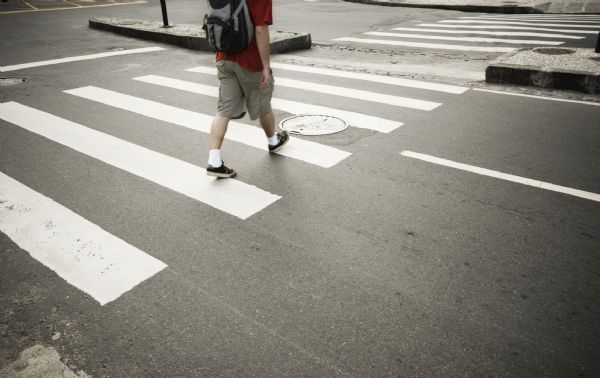 Marked pedestrian crossing facility with refuge island. Image credit: iStock
Marked pedestrian crossing facility with refuge island. Image credit: iStock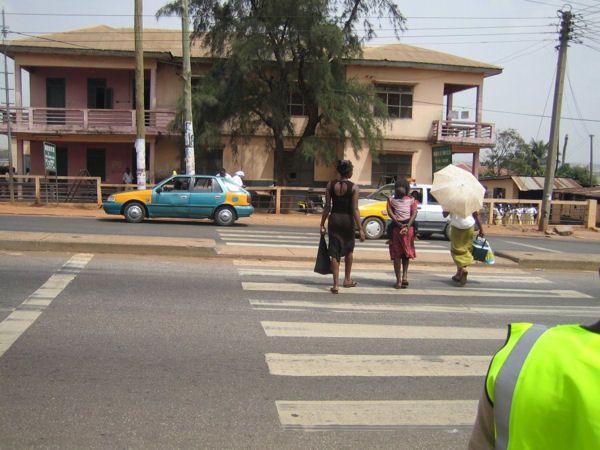 A pedestrian crossing facility with refuge island in Ghana. Image credit: John Fletcher
A pedestrian crossing facility with refuge island in Ghana. Image credit: John Fletcher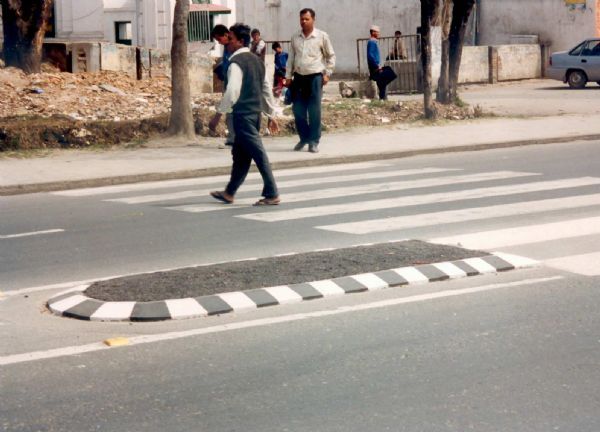 Pedestrian refuge island (overrunable) in Kathmandu. Image credit: Allan Jones
Pedestrian refuge island (overrunable) in Kathmandu. Image credit: Allan Jones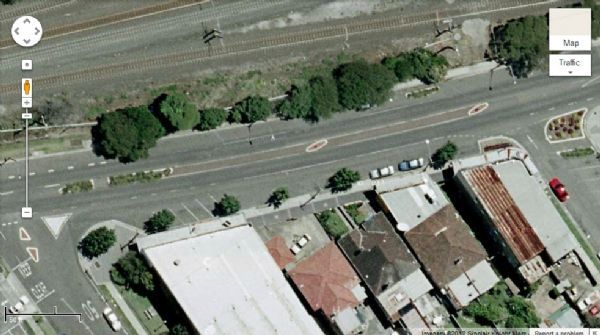 Pedestrian refuges, bicycle lanes, delineation and one-way road treatment. Image credit: Google Maps
Pedestrian refuges, bicycle lanes, delineation and one-way road treatment. Image credit: Google Maps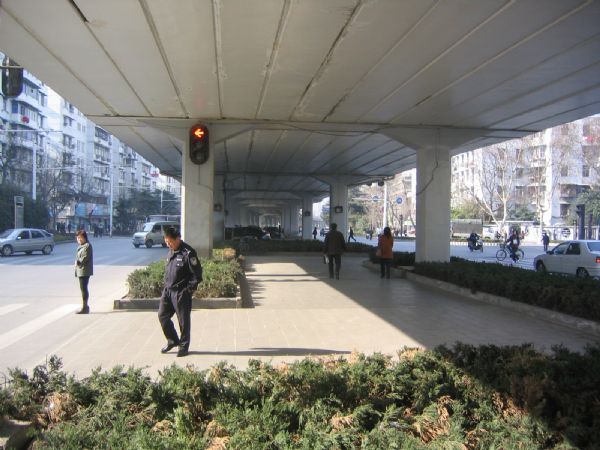 Physical channelisation (and planting) under the flyover to provide a safe refuge for pedestrians to cross the road in two stages. Image credit: Gladys Frame
Physical channelisation (and planting) under the flyover to provide a safe refuge for pedestrians to cross the road in two stages. Image credit: Gladys Frame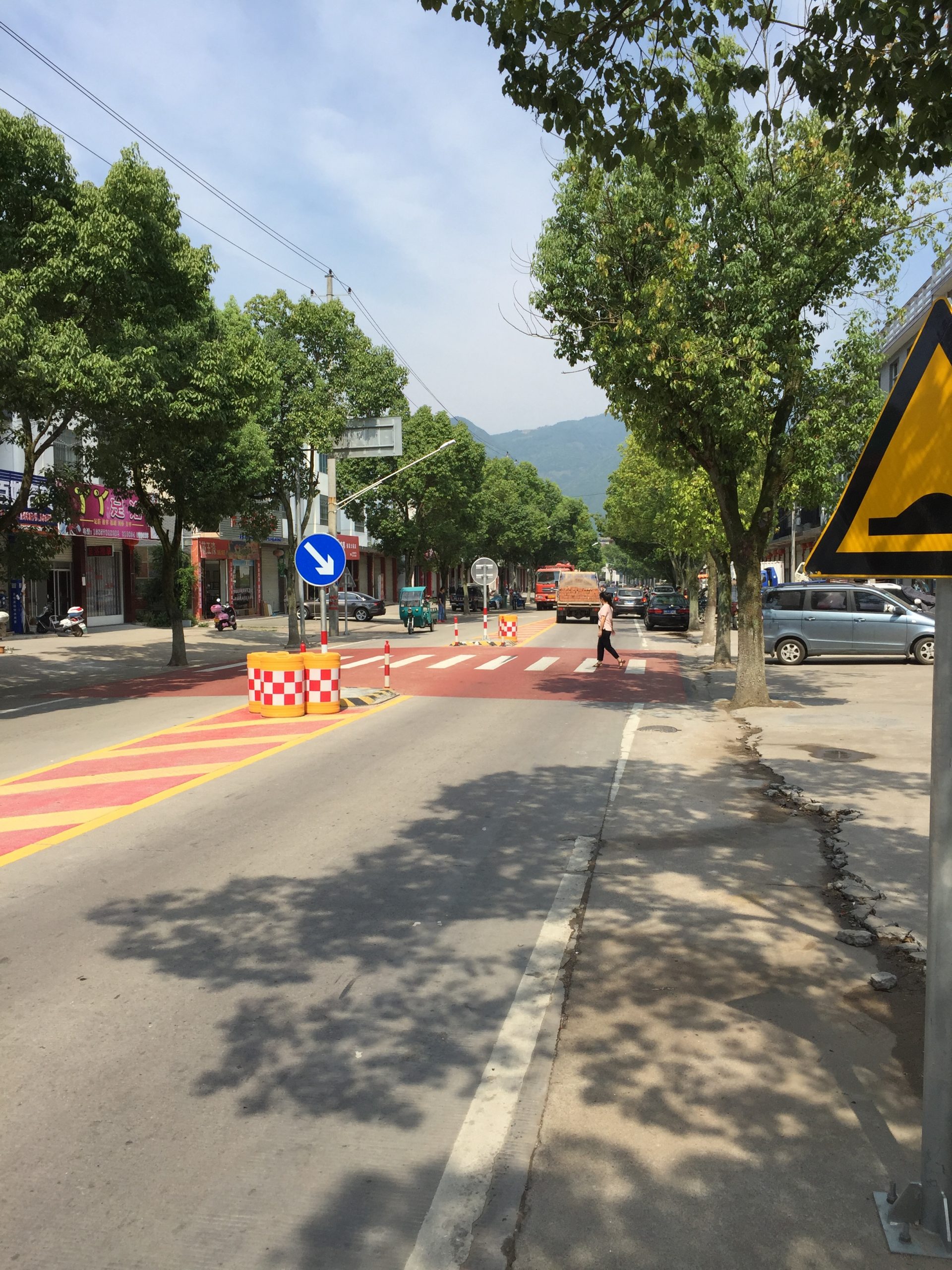 Raised pedestrian crossing in China. Image credit: Greg Smith
Raised pedestrian crossing in China. Image credit: Greg Smith










